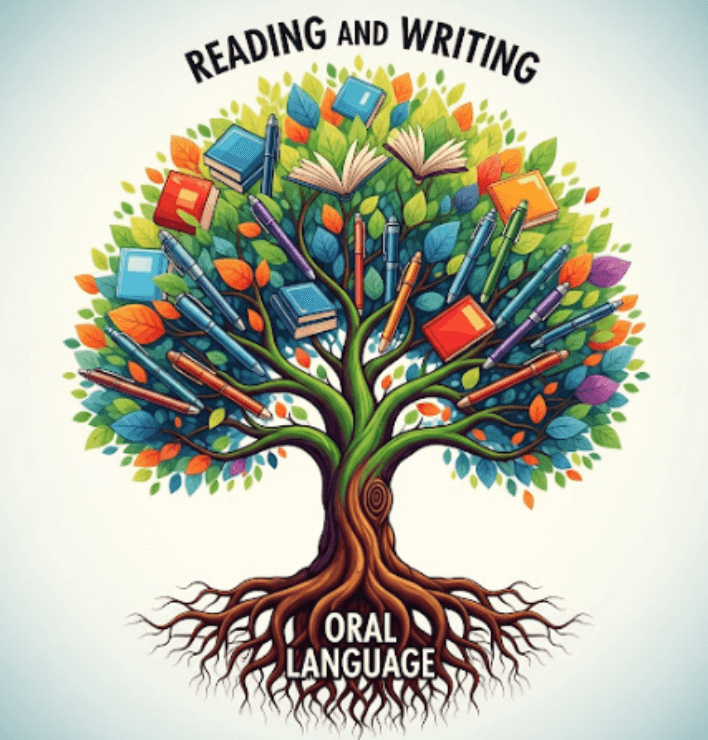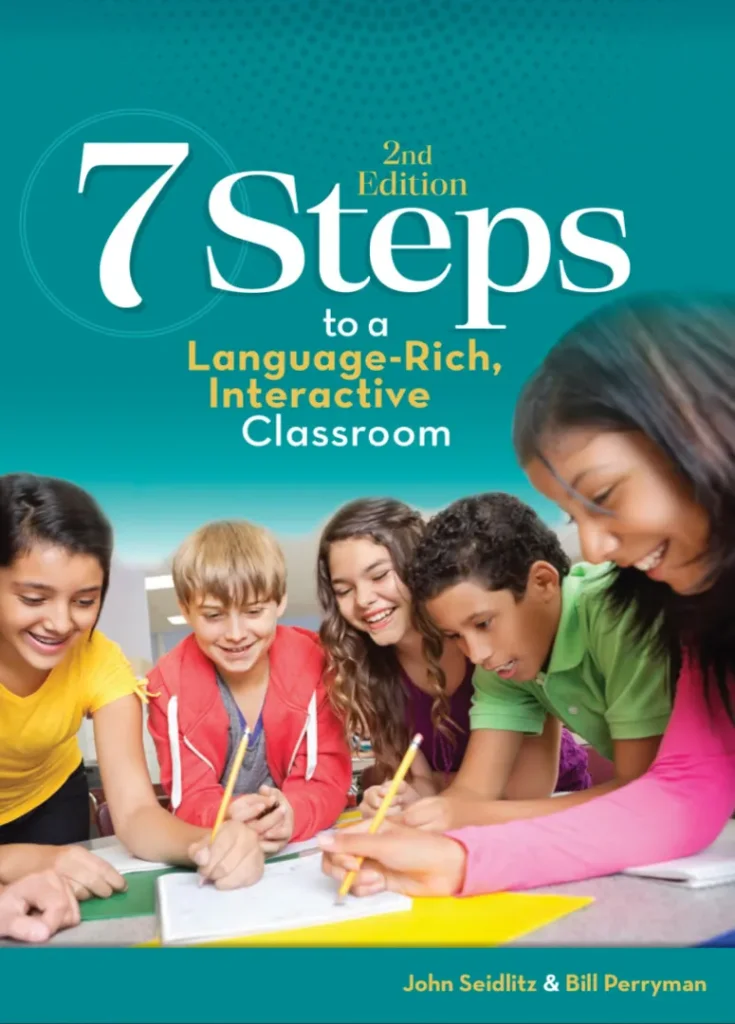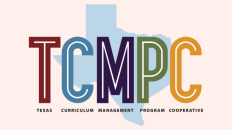Let’s just start with the obvious: if kids can’t say it, they’re going to have a real hard time writing it. Full stop. And no, muttering “idk” under their breath does not count as expressive language.
So, let’s talk about oral language: what it is, why it matters, and how it’s the secret sauce to better writing (and reading!) in your classroom. Join me in this blog to find out the connection.
This image was made in collaboration with Google Gemini.

The Science-y Part of Reading

According to the Science of Teaching Reading (STR), oral language isn’t a fluffy “extra”—it’s foundational. The Four-Part Processor Model (see a visual above) helps explain it:
- Phonological Processor: Helps students hear and manipulate sounds—critical for both decoding and spelling.
- Meaning Processor: Vocabulary and background knowledge live here.
- Context Processor: Supports comprehension by helping kids use sentence structure and context.
- Orthographic Processor: Ties it all together when students read and write print.
Here’s the kicker: all those processors rely on oral language! Talk drives comprehension, word retrieval, and idea generation, which are all crucial ingredients for writing success.
7 Steps to a Language-Rich, Interactive Classroom

This incredible book, 7 Steps to a Language-Rich, Interactive Classroom, by John Seidlitz and Bill Perryman, should be on every teacher’s desk. It offers approachable, student-centered strategies to amplify academic talk.
Step 1 alone, “Teach students what to say when they don’t know what to say,” is classroom gold.
Pair this with STR, and you’ve got a winning formula for improving writing through purposeful conversation.
Why Oral Language = Better Writing
When students can articulate their thinking out loud, they’re more prepared to:
- Organize ideas logically
- Use academic and precise vocabulary
- Understand sentence structures
- Shifting from “I dunno” to “Here’s what I think”
Writing starts with saying the thing. The mouth is the practice field; the pencil is game day.
Classroom Ideas to Boost Oral Language
Try these steps right away in your classroom to boost oral language:
1. “Turn and Talk” With a Twist
Prompt with a sentence frame. Example: “One thing I noticed about the main character was…”
Yes, you’ll hear the same thing 12 times, but then comes the magic: a student says, “Actually, I disagree…” and BOOM, language-rich interaction.
2. Picture Talk Prompts
Put up a wordless image (science, social studies, even silly ones). Ask: “What’s happening here? What might happen next?” Encourages storytelling, inference, and vocabulary use (all precursors to narrative writing).
Two of my favorite websites to get free images are:
3. Micro Debates
Keep it light: “Would you rather live in a treehouse or a submarine?” Have students support their stance with a reason and counterpoint. Academic vocabulary + sentence structure = practice that sticks.
4. Writing Warm-Ups: Say It First
Before any writing, have students “rehearse” their response aloud to a partner. Oral rehearsal helps students solidify sentence structure and word choice before hitting the page.
5. Partner Dictation
One student describes, and the other writes it down verbatim. Then, they swap roles. This activity is great for listening, speaking, and developing awareness of grammar in spoken language.
6. Mystery Word Games
Think: “I’m thinking of a word that means ‘to examine closely’ and starts with ‘i’…”
Vocabulary review becomes a speaking task. Win-win!
7. “I Wonder…” Walls
Invite students to say, and then write, curious observations across subjects. Language is fueled by curiosity!
Don’t Just Assign Writing—Build Toward It
Writing isn’t just about putting words on paper. It’s about formulating, organizing, and communicating ideas. Oral language helps students rehearse these skills, refine their thinking, and grow more confident in their writerly voices.
Let them talk. Encourage it. Structure it. Laugh through the awkward silences. Then watch their writing flourish.
Conclusion
Curious about professional development sessions that dig into oral language and writing across content areas? Visit our ESC Region 13 Reading Language Arts (RLA) website for more information, connect with our team, or check out our current training opportunities. Stay up-to-date by subscribing to our newsletter or see our other blog posts. We create powerful learning experiences for teachers that are active, learner-centered, and responsive to student needs.
For specific help with Elementary RLA, contact Gabrielle Sweetland-Garza at gabrielle.sweetland-garza@esc13.txed.net.
Disclaimer: The instructional reference, 7 Steps to a Language-Rich, Interactive Classroom, is recommended solely for its strategies to support academic language development and classroom communication. Its use is not intended to endorse or implement any diversity, equity, or inclusion (DEI) frameworks, nor does it promote race-based instruction. All classroom applications should focus exclusively on supporting learning needs without regard to race, color, or national origin, in full compliance with Title VI and relevant federal and state guidelines.

Gabrielle Sweetland-Garza
Gabrielle is an Elementary Reading Language Arts Specialist at ESC Region 13.





Add comment